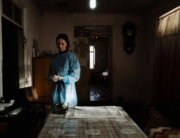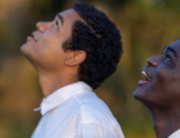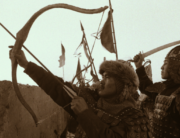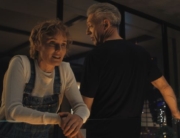
Twenty-six years after the release of the cinematic cause célèbre Kids, three of its cast members—Hamilton Chango Harris, Peter Bici, Jessica Forsyth—have regrouped to reclaim their narratives and co-produce filmmaker Eddie Martin’s unexpurgated version of the indie hit’s history. (Harris also co-wrote with Martin.) The result would make for an essential, warts-and-all, behind-the-scenes DVD extra. (Speaking of the ’90s, remember DVDs?) Perhaps it goes without saying, but Kids’ director Larry Clark and screenwriter, Harmony Korine, declined to face Martin’s camera.
Loaded with sex, drugs and violence, the 1995 movie landed on the cover of Newsweek magazine for its sensational depiction of a teenage wasteland, and it grossed reportedly 20 million dollars—it had a production budget of approximately one million. The bluntness of its sexual content stirred controversy that was expertly marketed to strong box office by its distributor, Harvey and Bob Weinstein. According to the documentary, the non-union cast was only paid a bonus of $1,000 and not further compensated after the movie’s success.
Through its talking heads and an abundance of clips (often raw home video), Martin captures, in part, New York City in the early to mid-1990s, with Harris as the main guide into the not-so-distant past. This tell-all also serves as a tribute to two of the cast members who died young, Harold Hunter and Justin Pierce, who was a runaway when he joined the skateboarders. They were members of a self-made family of teenagers, many of them living on their own. Noticeably missing here are actresses Chloë Sevigny and Rosario Dawson, both of whom made their debut in Kids. (Sevigny receives a “Special Thanks” in the closing credits, though.)
In the early 1990s, the 50-something Clark began hanging around the skateboarders—they called him “grandpa” behind his back. (Hamilton remembers that the director brought along “good weed.”) One of the kids, Jamal Simmons, wondered, “How can we make use of this motherfucker?” Little did they know Clark was having a similar thought, or so it seems.
NYU film student Harmony Korine became part of the skater group after he befriended Hunter. However, not all of the clique were on board when it came time to make Clark’s movie. Highlyann Krasnow, who was 16 at the time, was repelled by the emphasis on sex and the misogyny in the women’s roles when she read the script. She declined to participate: “We all knew Larry was sketchy.”
Clips from the press conference at the Cannes Film Festival, where Kids had its world premiere, and where none of the cast members were invited to attend, produced answers from Clark and Korine that were evasive or at least inarticulate. Their responses support the cast members’ impressions of the filmmakers. Clark comes across as perplexed and annoyed as he’s challenged by journalists’ questions (although the Cannes press corps can be a tough crowd). When asked if actual drugs were used, Korine answers, no, the onscreen drugs were fake. Hamilton says otherwise, pointing out that he was actually rolling a blunt on screen when he makes his first appearance in the movie.
In many ways the documentary follows a cautionary tale of fickle fame. However, just when viewers think that it mirrors a rote Behind the Music–type of trajectory, the filmmakers have one more moving reveal, which we won’t spoil here.
Does one need to have seen Kids to become involved in The Kids? No. The new film is a first-person account of the early to mid-1990s New York City from multiple perspectives. It also examines a highly unusual example of show biz success that comes out of nowhere, in this case for non-actors who suddenly become celebrities, and the crash that follows when they have no guidance.






Leave A Comment